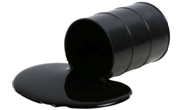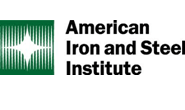Market Data

Biden Kills Keystone XL; What Does that Mean for Steel?
Written by Tim Triplett
January 24, 2021
Cancellation of the Keystone XL pipeline project by the Biden administration will have some impact on the steel market in North America, specifically supply and demand for line pipe, but the effect is difficult to assess, say the experts.
On his first day in office Wednesday, President Biden followed through on his green-energy campaign promise and revoked the permit for the controversial pipeline, angering officials in Canada. The project, which was designed to transport oil extracted from Canadian tar sands to refineries on the U.S. Gulf Coast, has been in the works, on and off, for more than a decade. The Obama administration refused to grant a permit for construction of the pipeline in 2015, citing the fossil fuel’s contribution to global warming and concerns among Native Americans and other citizens of the potential for oils spills to harm the environment and pollute drinking water. In 2017, the Trump administration revived the $8 billion project, pointing to the jobs it would create.
Calgary-based TC Energy, which was constructing the pipeline, said activity will stop as it “will review the decision, assess its implications, and consider its options.” A spokesperson for the company told Steel Market Update that at this time it has no information on steel—how much has already been purchased or how much will no longer be needed—as a result of the president’s decision.
In a press conference prior to Biden’s executive order, Alberta Premier Jason Kenney was quoted as saying: “If the project ends, there would be assets that could be sold, such as enormous quantities of pipe. That would offset construction costs.” Thus the secondary market for large-diameter pipe is likely to see a spike in supply.
“Pipe was still on the ground from the original go around with KXL. Some of this will compete against new pipe somewhere,” said energy analyst Rick Preckel, a principal with Preston Pipe. “In August last year, both Welspun and Berg announced they had received orders for more pipe (Welspun said over a million feet, Berg just said a ‘large order’) related to the project. It wasn’t clear when manufacturing for that pipe would start, but both said it would keep them busy into early 2021. We don’t expect the large-diameter line pipe market segment to be much of a contributor to steel demand,” added Preckel.
Reacting to President Biden’s executive order pulling the plug on the pipeline, Canadian Prime Minister Justin Trudeau said: “We are disappointed, but acknowledge the president’s decision to fulfill his election campaign promise on Keystone XL. Despite President Biden’s decision on the project, we would like to welcome other executive orders made today, including the decisions to rejoin the Paris Agreement and the World Health Organization, to place a temporary moratorium on all oil and natural gas leasing activities in the Arctic National Wildlife Refuge, and to reverse the travel ban on several Muslim-majority countries.”
Some experts believe the Keystone XL decision spells the end of an era for major pipeline projects in the United States–which if true has longer-term implications for energy steel demand.
By Tim Triplett, tim@steelmarketupdate.com

Tim Triplett
Read more from Tim TriplettLatest in Market Data

SMU Mill Order Index fell in September
SMU’s Mill Order Index declined in September after repeated gains from June through August. The shift came as service center shipping rates and inventories fell.

North American auto assemblies slipped in September
North American auto assemblies declined in September, down 5.1% vs. August. And assemblies were also down 1% year on year.

HARDI: Galv demand improves in October, higher prices expected in new year
Participants on this month’s Heating Air-Conditioning & Refrigeration Distributors International (HARDI) Sheet Metal/Air Handling Council call expect galvanized steel base prices to firm up in the first quarter of 2026.

AISI: Raw steel mill output stabilizes
Domestic mill production inched higher last week, according to the latest figures released by the American Iron and Steel Institute (AISI). Prior to the start of this month, raw output had remained historically strong since June.

Steel market chatter this week
What's on steel buyers' minds this week? We asked about market prices, demand, inventories, tariffs, imports, and other evolving market trends. Read on for buyers' comments in their own words...
